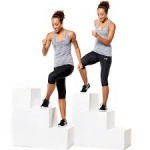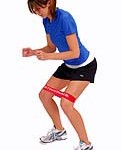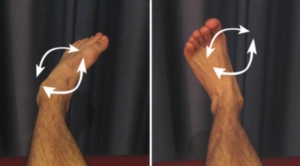Gentle Reader,
My knee complains. Knee pain from the old injury is caused by arthritis. In the forest searching for chanterelles, my companions and I climb steeply to the plateau, second growth northwest forest of red cedar, western hemlock, Douglas fir, alder and vine maple. The understory is mossy in places, the green blanket providing the perfect platform for the golden mushroom; in other places, it is thick with salal, sword fern and Oregon grape. Chanterelles hide there, too. This hunting ground is well known to local pothunters, the name we give people who hunt mushrooms for food, delicious sautéed-in-butter food. We did not have hope for finding many.
Glorious! On a super steep incline, there they were, pockets of gold, enough for all three of us. On the way down, my knee—the left one—complained bitterly. I traveled without my hiking sticks. They get in the way when hunting mushrooms. A couple times, I feared the knee pain would cause my leg to fail me completely.
In 1992, I avoided a long trek to get back to my car by climbing a chain link fence and jumping to the ground on the opposite side. My left leg suffered nerve damage when I herniated a disc—L5—in 1989, so it did not give or bounce when I landed. I heard the pop and knew I was in trouble. I managed to walk to my car, drove home, had a hearty snack and headed for the emergency room of the University hospital. Fast forward to the consultation after 3 months of non-weight bearing healing:
Mrs. Bell; Expect arthritis, probably severe, within the next couple of years and we’ll see you here for a knee replacement ten years from now.
That was twenty-two years ago. I have managed the arthritis with exercise and supplements and, until now, have had only a few twinges of knee pain and the sensation of the knee giving way very occasionally.
What to do? I have increased the stair climbing exercises, but not straight up and down. I suspect that the knee pain is the result of neglecting the best exercise for

knees that I know about: the grape vine step up and down the stairs. I wish I had a video to show you. Point your shoulder to the top of the stairs. Facing the bottom step sideways, begin climbing by putting the outside foot upon the next step behind the inside foot; lift with the upper foot; step up with the inside food; swing the outside foot in front of the inside foot in front and lift the body; repeat. The second 20 steps face the top with the opposite side of the body. I repeated this five times today and will do 200 steps up and down several more times this week. I can tell the difference right away.
Why does this work? Women have broad hips and a wide pelvis. Most of us women have slightly knocked knees as the result of the wide pelvis. The strain on the kneecap, muscles and tendons above and below the knee is great. When you strengthen the sides of the knee, this strain is mitigated. I learned this from a guy I met climbing the monster staircase from Blaine St. to Lakeview on Capitol Hill—300 risers. He was on the stairs going up with the grape vine step to increase his balance so he would be able to navigate backpacking in the high mountains with a heavy pack without as much danger of falling. I was training to climb Mt. Shasta, a 14,000 ft peak in northern California and immediately adopted his training method. I am back at it.
The confirmation of this training method came from an article in Seattle Women, “Training Like a Girl,” featuring Dr. Stan Herring, sports medicine doctor who works with University of Washington athletes and, was my doctor after my herniated disc incident. Dr. Herring stresses that “female athletes will obtain strength gains and aeroic gains in the same proportion as male athletes, if you train them appropriately.”
One major issue female athletes [all women who are active] face is their increased risk of anterior cruciate ligament (ACL) injury. “Females should spend more time with upper body strengthening and they should certainly spend more time with lower body conditioning for core and lower extremity strength, balance and motor control because it does have a direct effect on the ACL” says Dr. Herring. Let me share the information about the ACL which I found helped me understand why we women have more trouble with our knees.
The ACL is one of a pair of ligaments in the center of the knee joint that stabilizes the knee from front to back during normal and athletic activities. Increased estrogen production during puberty causes the pelvis to widen, which can cause the knees to turn inward. These hormonal and anatomical facts lead to female athletes sustaining noncontact ACL injuries between two and 10 times more often than male athletes. To avoid this risk, build up the secondary muscles that support the hips, knees and ankles. The stair climbing sideways with the grapevine step helps this. The author

described strengthening the knees by tying an elastic band around you thighs or ankles—your feet are about 4 inches apart when you are setting this up—and then walking around the house in a squat position, moving sideways and another set moving forward. This strengthens both knees and legs. Do about 40 to 60 steps sideways in one direction and then reverse, leading with the opposite foot for 40 to 60 steps. Maintain the squat position throughout.
Above all, when confronted with joint pain, do not sit down and avoid using those joints. Find something you can still do. Joints have low blood flow. They need movement to stay functional. Of course, if you have a major inflammation, you need to reduce that with medication, ice and rest, but test yourself for the best way to get movement back into that joint. When I was non-weight bearing for so many weeks, I sat on the floor and  lifted the affected leg, traced the alphabet with my foot, isometrically tensed and relaxed the muscles up and down the leg, did side lifts with the affected leg. When the cast came off, I walked without a limp. The muscles had not atrophied. I know people whose knee replacement surgery or other foot and leg surgeries have not healed well. More movement to stimulate blood flood would surly help healing.
lifted the affected leg, traced the alphabet with my foot, isometrically tensed and relaxed the muscles up and down the leg, did side lifts with the affected leg. When the cast came off, I walked without a limp. The muscles had not atrophied. I know people whose knee replacement surgery or other foot and leg surgeries have not healed well. More movement to stimulate blood flood would surly help healing.
I am going to avoid knee surgery as long as I possibly can. Using sticks to climb and descend helps relieve pressure on the knees. I’ll keep you posted. Let me and my readers know what your techniques are to lessen knee pain and keep moving.
Be well, Do well and Keep Moving.
Betsy
206 933 1889
![CAM01994[1]](http://www.grandmabetsybell.com/wp-content/uploads/2014/10/CAM019941-150x150.jpg)